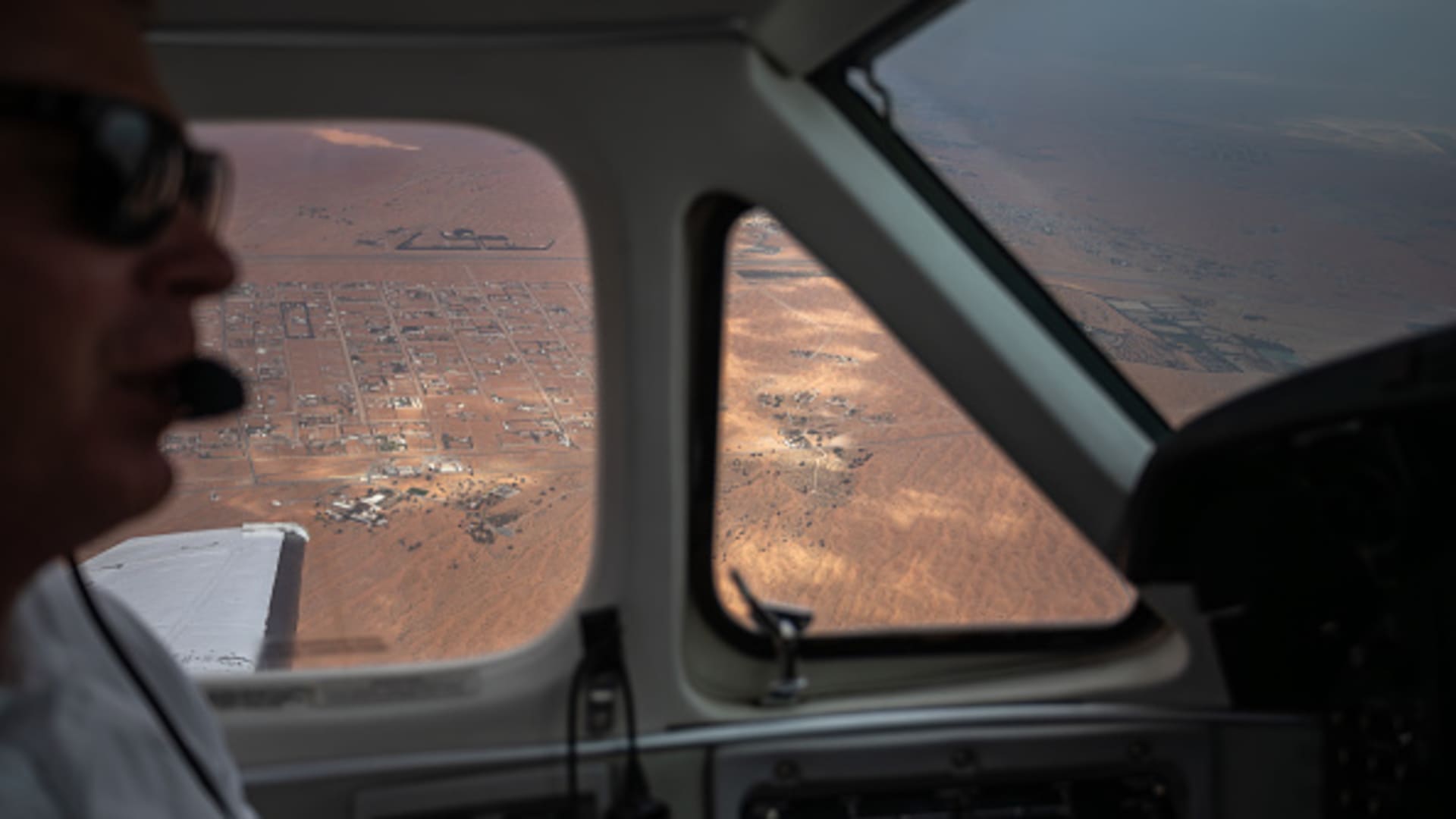United Arab Emirates is using cloud seeding tech to make it rain


Rising global temperatures have added a strain on regions like the Middle East, which is extremely vulnerable to the impacts of climate change.
These nations are now faced with a big problem, how can they solve their water shortage issues?
The United Arab Emirates averages less than 200 millimeters of rainfall a year, in stark contrast to London’s average of 1,051 millimeters and Singapore’s 3,012 millimeters.
In the UAE, temperatures can reach as high as 50 degrees Celsius (122° Fahrenheit) during the Summer, where 80% of the country’s landscape is covered with desert terrain.
Extreme heat could exacerbate water scarcity issues and impose restraints on agricultural productivity in the country.
The United Nations projects that by 2025, 1.8 billion people will face absolute water scarcity across the world. The Middle East stood out as one of the most water-stressed areas with around 83% of the population in the region prone to experiencing high levels of water stress.
With water scarcity at the core of the region’s challenges, the Gulf state implemented a program aimed at addressing this issue.
Introduction of cloud seeding
In the 1990s, the UAE introduced a rain enhancement methodology called cloud seeding. Cloud seeding is the process of increasing the amount of rain produced from the clouds above, which is designed to improve water shortage issues in arid regions around the emirate.
A view of the UAE city of Al Ain during a cloud-seeding mission on January 31, 2024 in Al Ain, United Arab Emirates.
Andrea Dicenzo | Getty Images News | Getty Images
By the early 2000s, Sheikh Mansour Bin Zayed Al Nahyan, the vice president of the UAE, allocated up to $20 million for research into cloud seeding. The UAE partnered with the National Center for Atmospheric Research in Colorado and NASA to set up the methodology for the cloud seeding program.
The government introduced a task force called The National Center of Meteorology (NCM) in Abu Dhabi where more than 1,000 hours of cloud seeding is performed each year to enhance rainfall.
The NCM has a weather radar network and more than 60 weather stations where it manages seeding operations in the country and closely monitors atmospheric conditions.
How it works
Weather forecasters at the center can observe precipitation patterns in clouds and identify suitable clouds to seed, with the aim of increasing the rate of rainfall.
Once they spot the right cloud, they instruct pilots to take to the air with their specialized aircrafts loaded with hygroscopic flares on the plane’s wings.
= A ground engineer restocking one of the UAE’s National Center of Meteorology cloud-seeding planes with new Hygroscopic salt flares on January 31, 2024 in Al Ain, United Arab Emirates.
Andrea Dicenzo | Getty Images News | Getty Images
Each flare contains about 1 kilogram of salt material components and can take up to three minutes to burn and shoot into the right clouds. After the seeding agent is introduced into the cloud, the droplets increase in size, surpassing the cloud’s capacity to sustain them against gravity, resulting in their release as raindrops.
Seeding agents
Skeptics have long argued that governments who have introduced weather modification techniques to their skies are “playing God.”
During a visit to the NCM, General Director Abdulla Al Mandous told CNBC that the technology is “based on scientific background.”
Al Mandous added that Abu Dhabi’s program does not use silver iodide, a common crystal-like material used as a seeding agent in other countries. This material has been widely criticized for potential harmful effects on the environment and the public, however, some cloud seeding studies show there has been no substantial evidence to prove that at current levels it poses any toxic effects.
The NCM said it does not use any harmful chemicals in its operations. “Our specialized aircrafts only use natural salts, and no harmful chemicals,” the organization told CNBC.
Al Mandous said the center started manufacturing its own seeding agent called nano material, a fine salt coated with titanium oxide, which is more effective than what it uses currently.
“It will give us three times more effective results than the hygroscopic flares,” he said.
The nano material is presently undergoing trials and experimentation in various atmospheres, both in the UAE and the U.S.









